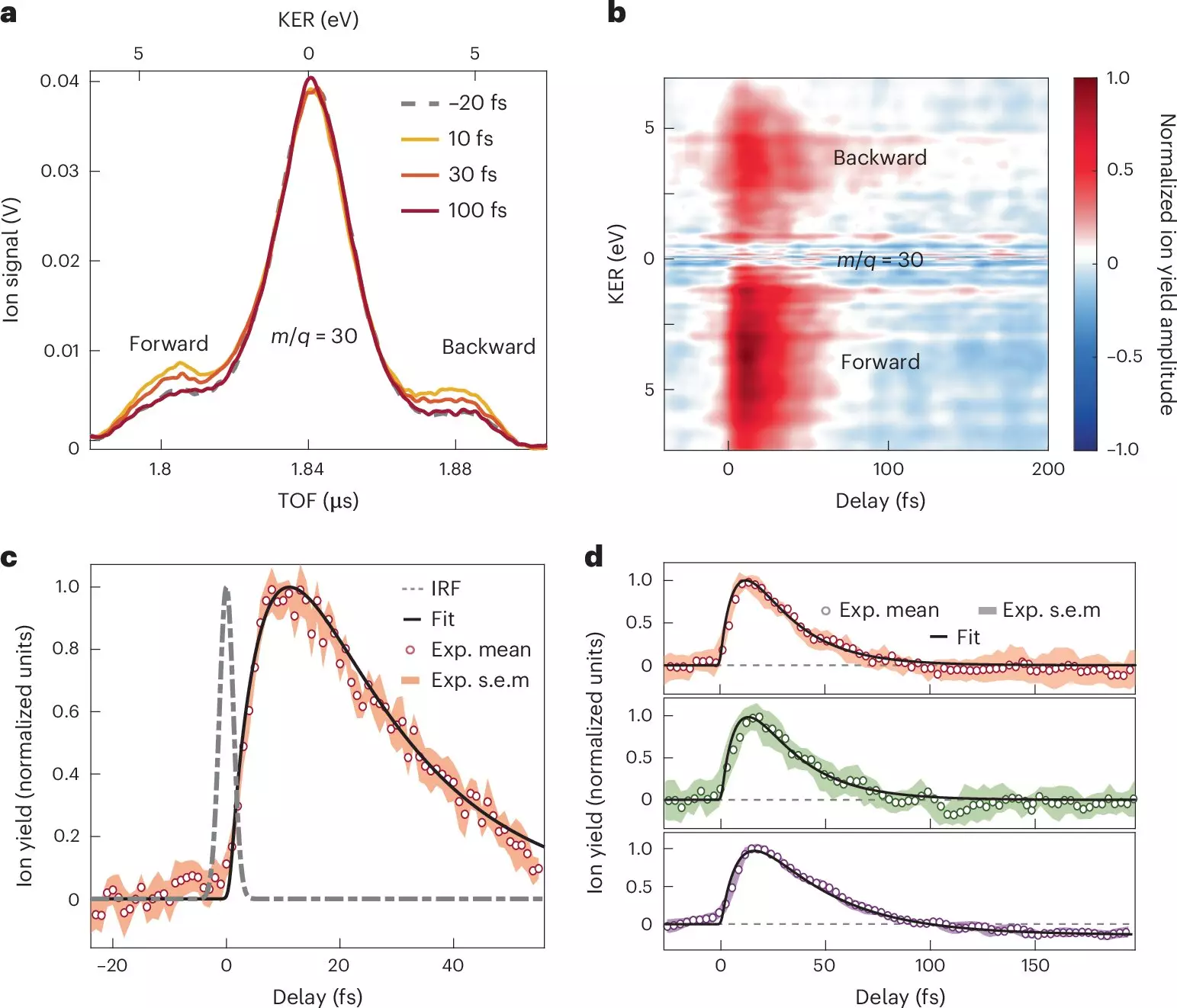In the natural world, processes such as photosynthesis serve as a testament to the remarkable capabilities of molecular systems. Plants and bacteria convert sunlight into energy through a series of complex reactions, effectively utilizing electronic processes to transfer charges within their molecular structures. In a parallel manner, modern technology replicates these principles with solar panels that convert light into electric power through photovoltaics. Both instances underscore the critical importance of charge transfer at the molecular level, which is a sophisticated phenomenon driven by rapid electronic movements, often informed by quantum mechanics and intricate molecular dynamics.
Understanding these ultrafast dynamics is not merely an academic pursuit; it has profound implications for fields ranging from chemistry to materials science. The manipulation and measurement of electronic density changes that occur when molecules absorb light have seen significant advancements in recent years. By harnessing ultrafast techniques, scientists can peer into these molecular processes with remarkable temporal accuracy, which in turn lays the groundwork for engineering new chemical properties to control and enhance charge transfer characteristics.
The advent of ultrashort ultraviolet pulses generated by high-order harmonic sources and free electron lasers marks a revolution in the field of attosecond science. By utilizing these cutting-edge technologies, researchers can excite molecular systems and observe their reactions on a time scale that ranges from femtoseconds (10^-15 seconds) to attoseconds (10^-18 seconds). This unprecedented resolution allows for an intimate examination of the initial steps following a photon’s interaction with a molecule, particularly those moments leading to photoionization.
Despite remarkable progress in these methodologies, a comprehensive understanding of the detailed mechanisms governing charge transfer immediately after photoionization has remained elusive. Recent research by a team from Politecnico di Milano, the Madrid Institute for Advanced Studies in Nanoscience, and several universities in Madrid has taken significant strides to decode these rapid events.
Groundbreaking Findings on Nitroaniline Molecules
In an illuminating study published in Nature Chemistry, researchers successfully detailed the ultrafast dynamics inherent in donor-acceptor molecular systems. By subjecting nitroaniline molecules to attosecond extreme-ultraviolet pulses, the research team gleaned insights into the early stages of charge transfer with an unprecedented temporal resolution. This groundbreaking research approach combined attosecond extreme-ultraviolet-pump techniques with few-femtosecond infrared-probe spectroscopy, alongside advanced many-body quantum chemistry calculations, creating an intricate framework to observe and interpret these swift processes.
The findings reveal a remarkable timeline for charge transfer: electron movement from the amino group (the donor) occurs in under 10 femtoseconds, correlating with synchronized shifts in both nuclear and electronic positions. Following this initial transfer, a relaxing sub-30-femtosecond period allows the nuclei of the cation to explore their newly excited states, dispersing the nuclear wave packet intricately. This provides a glimpse into the nexus of electron and nuclear dynamics that govern chemical interactions, showing that electron-nuclear coupling plays a pivotal role in influencing how donor-acceptor systems behave under photoionization.
These revelations expand the understanding of electron transfer mechanisms and their accompanying structural changes, especially in how charges migrate within organic molecules. By revealing the actual timescales involved in transferring charge from an electron donor unit to a neighboring chemical bond, and the structural modifications that occur, this study contributes nuanced insights into the pedagogical concepts commonly used to depict charge flow in chemical literature.
Moreover, the authors posit that these experimental and theoretical advancements represent a foundational shift in how researchers can both qualitatively and quantitatively predict charge migration across molecular architectures. As the understanding of these intricate dynamics deepens, the potential for practical applications in materials design and energy conversion processes grows exponentially.
The study not only enriches the field of molecular dynamics but also lays a promising foundation for future explorations in attosecond science, highlighting an area ripe for discovery and innovation. The convergence of theory, experimentation, and cutting-edge technology positions this research as a cornerstone for further advancements in understanding and manipulating charge transfer processes in a variety of chemical systems.


Leave a Reply